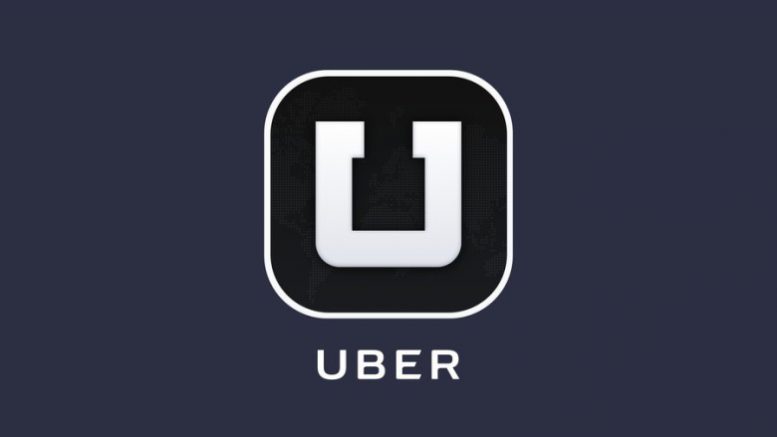- By Sayeed Yahya
Uber and the Greyball tool used to take on global governments

Advertise here from only $250/day USD
Uber has for years engaged in a worldwide program to deceive the authorities in markets where its ride-hailing service was resisted by law enforcement or, in some instances, had been outright banned.
Uber’s fight back, involving a tool called Greyball, uses data collected from the Uber app and other techniques to identify and circumvent officials who were trying to clamp down on the ride-hailing service. Uber used these methods to evade the authorities in cities like Boston, Paris and Las Vegas, and in countries like Australia, China and South Korea.
Greyball was part of a program called VTOS, short for “violation of terms of service” which Uber created to root out people it thought were using or targeting its service improperly. The program, including Greyball, began as early as 2014 and remains in use, predominantly outside the United States. Greyball has been scrutinised and approved by Uber’s legal team. The aim being to discover undercover police or government lackies and block them from Uber’s services.
Greyball and the VTOS program was discussed with Al-Sahawat Times by current and former Uber employees, who also provided documents and ecidence. The four whistle blowers spoke out on the condition of anonymity because the tools and their use are confidential and because of fear of retaliation by Uber.
Uber vs The Man
Uber’s use of Greyball was recorded on video in late 2014, when Erich England, an enforcement inspector in Portland, Oregon, USA tried to hail an Uber car downtown in a sting operation against the company.
At the time, Uber had just started its ride-hailing service in Portland without seeking permission from the city, which later declared the service illegal. To build a case against the company, police officers like England posed as riders, opening the Uber app to hail a car and watching as miniature vehicles on the screen made their way toward the potential fares.
However unknown to Mr. England and other authorities, some of the digital cars they saw in the app did not represent actual vehicles. And the Uber drivers they were able to hail also quickly cancelled. That was because Uber had tagged England and his colleagues essentially ‘Greyballing’ them as city officials based on data collected from the app and in other ways. The company then served up a fake version of the app to those labelled as greyballs, populated with ghost cars, to evade capture.
At a time when Uber is already under scrutiny for its boundary-pushing workplace culture, with some countries such as the UK insisting that drivers are not self employed but actually employees of Uber, thus requiring stricter regulation, higher taxes and ultimately higher fair, Uber’s use of the Greyball tool underscores the lengths to which the company will go to dominate its market. Uber has long pushed the boundaries of regional laws and regulations to gain an edge against entrenched transportation providers, a modus operandi that has helped propel it into more than 70 countries and to a valuation close to $70 billion USD (2016 – Value source: New York Exchange).
Yet using it’s app to identify and sidestep the authorities where regulators said Uber was breaking the law some law makers say goes further toward skirting ethical lines and, potentially, legal ones. Some at Uber who knew of the VTOS program and how the Greyball tool was being used were troubled by it, leading to some approaching Al-Sahawat Times with their whistle blower’s evidence and stories.
In a statement, Uber said, “This program denies ride requests to users who are violating our terms of service, whether that’s people aiming to physically harm drivers, competitors looking to disrupt our operations, or opponents who collude with officials on secret ‘stings’ meant to entrap drivers.”
The mayor of Portland, Ted Wheeler, said in a statement, “I am very concerned that Uber may have purposefully worked to thwart the city’s job to protect the public.”
Uber, which lets people hail rides using a smartphone app, operates multiple types of services, including a luxury Black Car offering in which drivers are commercially licensed. The Uber service that many regulators have had problems with is the lower-cost version, known in the United States and United Kingdom as UberX.
UberX essentially lets people who have passed a background check and vehicle inspection become Uber drivers quickly. In the past, many cities have banned the service and declared it illegal. A whistle blower in London, UK provided evidence to Al-Sahawat Time’s European offices alleging that some UK Uber drivers passed the background checks with substantial criminal records including periods in jail of 10 years or more. Ethically a criminal conviction should and indeed in many cases legally can not stop you from obtaining work, after all everyone deserves a second chance and time is served and lessons are learned. The UK however typically is the only country in the world who does not offer work to those with any sort of criminal record.
Officials in some cities across the world declared UberX as illegal mainly because the ability to summon a noncommercial driver, which is how UberX drivers using private vehicles are typically categorized, was often unregulated. In barrelling into new markets, Uber capitalised on this lack of regulation to quickly enlist UberX drivers and put them to work before local regulators could stop them.
After the authorities caught on to what was happening, Uber and local officials often clashed. Uber has encountered legal problems over UberX internationally. Eventually, agreements were reached under which regulators developed a legal framework for the low-cost service.
That approach has been costly. Law enforcement officials in some cities have impounded vehicles or issued tickets to UberX drivers, with Uber generally picking up those costs on the drivers’ behalf. The company has estimated thousands of dollars in lost revenue for every vehicle impounded and ticket received in each city in each country where this problem is encountered ultimately resulting in fair rises for the customers.
This is where the VTOS program and the use of the Greyball tool came in. When Uber moved into a new city, it appointed a general manager to lead the charge. This person, using various technologies and techniques, would try to spot enforcement officers.
One technique involved drawing a digital perimeter, or “geofence,” around the government offices on a digital map of a city that Uber was monitoring. The company watched which people were frequently opening and closing the app, a process known internally as eyeballing, near such locations as evidence that the users might be associated with city agencies.
Other techniques included looking at a user’s credit card information and determining whether the card was tied directly to an institution like a police credit union.
Police officials involved in large-scale sting operations meant to catch Uber drivers would sometimes buy dozens of cellphones to create different accounts. To circumvent that tactic, Uber employees would go to local electronics stores to look up device numbers of the cheapest mobile phones for sale, which were often the ones bought by city officials working with budgets that were not large.
In all, there are at least a dozen or so signifiers in the VTOS program that Uber employees could use to assess whether users were regular new riders or undercover police, these markers can not legally be published out of safety concerns for Uber drivers, Al-Sahawat Times did not record or keep any record of these measures, nor have any journalists, sources or persons related to Al-Sahawat Times in any way.
If such clues did not confirm a user’s identity, Uber employees would search social media profiles and other information available online. If users were identified as being linked to law enforcement, Uber Greyballed them by tagging them with a small piece of code that read “Greyball” followed by a string of numbers.
When someone tagged this way called a car, Uber could scramble a set of ghost cars in a fake version of the app for that person to see, or show that no cars were available. Occasionally, if a driver accidentally picked up someone tagged as an officer, Uber called the driver with instructions to end the ride.
Uber employees said the practices and tools were born in part out of safety measures meant to protect drivers in some countries. In France, UK, India and Kenya, for instance, taxi companies and workers targeted and physically attacked Uber drivers.
This story is available on:
APPLE NEWS | GOOGLE NEWS | AL-SAHAWAT TIMES
Talk to a journalist:
Email: NewsDesk@alsahawat.com
Web: alsahawat.com
Twitter: @alsahawat_times
S.Yahya@alsahawat.com
Views: 0






